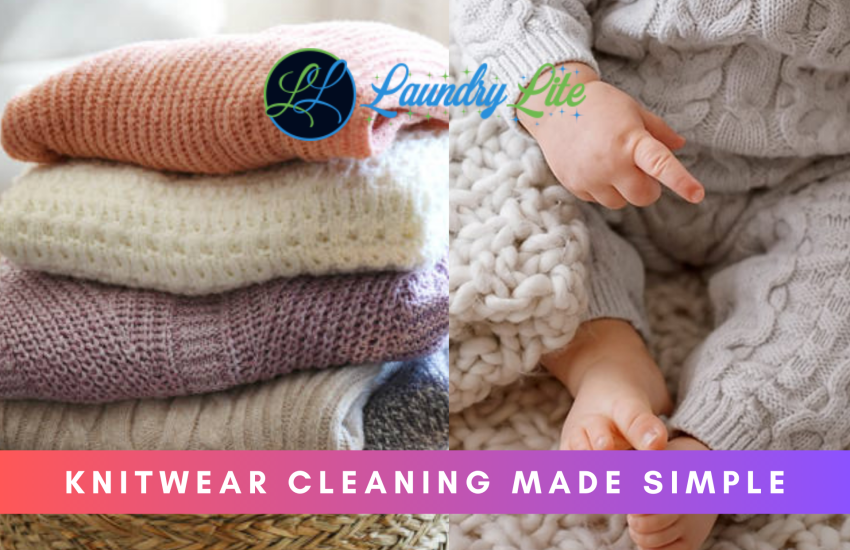Knitwear is a staple in any wardrobe during the cooler months, providing warmth and style to any outfit. However, caring for knitwear can be a daunting task, especially when it comes to cleaning. Whether it’s a cozy sweater or a delicate scarf, proper cleaning is essential to ensure the longevity and quality of your knitwear. In this article, we will provide essential tips and tricks to simplify the process of knitwear cleaning.
Read the Care Label
Before washing your knitwear, it is important to check the care label. The care label provides valuable information on the appropriate cleaning method for the garment. Knitwear can be made from a variety of materials, including wool, cashmere, and acrylic, each with different washing requirements. The care label will indicate whether the garment can be machine-washed, hand-washed, or dry-cleaned. It will also indicate the water temperature and whether bleach should be used.
Hand-Wash or Machine-Wash
When it comes to cleaning knitwear, hand-washing is often the preferred method. Hand-washing is gentle on delicate fibers and ensures that the garment is not stretched or damaged. Fill a sink or basin with cool water and add a mild detergent. Place the garment in the water and gently agitate it for a few minutes. Rinse the garment with cool water until the water runs clear. Squeeze out excess water, but do not wring or twist the garment. Lay the garment flat on a towel and roll it up to remove excess water. Reshape the garment and lay it flat to dry.
If machine-washing is the preferred method, use a delicate cycle with cool water and a mild detergent. Place the garment in a mesh laundry bag to prevent stretching or snagging. Avoid using fabric softener, which can damage fibers and cause pilling. Once the cycle is complete, remove the garment from the machine and lay it flat on a towel to dry.
Avoid Hot Water
When cleaning knitwear, it is important to avoid hot water. Hot water can cause fibers to shrink and lose their shape. Instead, use cool or lukewarm water to ensure that the garment maintains its size and shape.
Use a Mild Detergent
When washing knitwear, it is important to use a mild detergent that is specifically designed for delicate fabrics. Harsh detergents can damage fibers and cause fading or discoloration. Look for a detergent that is labeled as gentle or mild and does not contain bleach or fabric softener.
Dry-Clean Only
Some knitwear garments may be labeled as dry-clean only. In this case, it is important to follow the care label and take the garment to a professional cleaner. Dry-cleaning uses solvents to clean the garment, which can be harmful if done at home. Taking the garment to a professional cleaner ensures that it is properly cleaned without causing damage.
Store Knitwear Properly
Proper storage is essential to ensure the longevity of knitwear. Fold knitwear and store it in a drawer or on a shelf. Hanging knitwear can cause stretching and distortion. To prevent moth damage, store knitwear in airtight containers or use cedar balls or lavender sachets to repel moths.
Deal with Stains Quickly
If a stain occurs on knitwear, it is important to deal with it quickly. Blot the stain with a clean, damp cloth to remove as much of the stain as possible. Avoid rubbing the stain, as this can cause damage to fibers. If the stain persists, treat it with a stain remover that is specifically designed for delicate fabrics. Test the stain remover on an inconspicuous area of the garment first to ensure that it does not cause damage.
Beware of Pilling
Pilling is a common problem with knitwear, especially with materials like wool and cashmere. Pilling occurs when the fibers on the surface of the garment become entangled and form small balls or pills. To prevent pilling, avoid wearing knitwear with rough or abrasive fabrics, as this can cause friction and damage to the fibers. Additionally, avoid washing knitwear with clothes that have zippers, buttons or hooks, as these can snag the fibers and cause pilling.
To remove pills, use a fabric shaver or a sweater stone. A fabric shaver is a small device that removes pills from the surface of the garment by gently shaving them off. A sweater stone is a pumice-like stone that removes pills by gently rubbing the surface of the garment. Both methods are effective in removing pills and restoring the appearance of the garment.
Use Vinegar to Remove Odors
Knitwear can develop odors over time, especially if it is not washed frequently. To remove odors, add a cup of white vinegar to the rinse cycle when washing knitwear. Vinegar helps to neutralize odors and leaves the garment smelling fresh.
Don’t Overdo It
While it is important to keep knitwear clean, it is equally important not to overdo it. Over-washing can cause fibers to weaken and lose their shape. Additionally, avoid using hot water, harsh detergents, and fabric softeners, as these can cause damage to the garment. To ensure the longevity of knitwear, wash it only when necessary and follow the care label instructions.
Conclusion
In conclusion, caring for knitwear may seem like a daunting task, but with the right knowledge and tools, it can be a simple and straightforward process. By following these essential tips and tricks, you can ensure that your knitwear remains clean, fresh, and in excellent condition for years to come. Remember to always check the care label, use gentle cleaning methods, store knitwear properly, deal with stains quickly, and avoid over-washing. With these simple steps, you can keep your knitwear looking and feeling its best throughout the cooler months.

